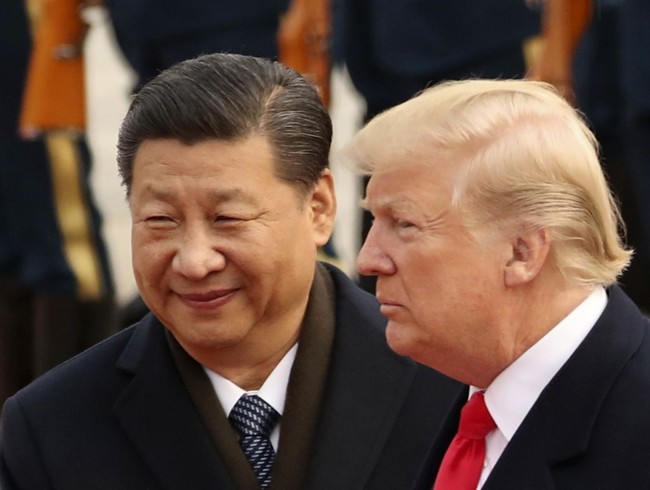


President Donald Trump signed an executive order Monday evening extending the U.S.-China tariff truce for another 90 days, just hours before a midnight deadline that would have triggered massive tariff increases on Chinese goods. The order prevents high U.S. tariffs on Chinese goods from snapping back into effect, giving negotiators until mid-November to reach a more permanent trade agreement.
The extension maintains current tariff levels rather than allowing them to spike to economically devastating levels. Under the current negotiated arrangement, U.S. "reciprocal" tariffs on Chinese imports stand at 30%, while China's retaliatory tariffs on American goods are at 10%. When combined with other existing tariffs including 20% fentanyl-related duties, total effective U.S. tariff rates on Chinese goods average 54.9%. Without the extension, those rates could have jumped to 145% and 125% respectively—levels that would have functioned as an effective trade embargo between the world's two largest economies.
Some American businesses and consumers have been struggling with the broader impact of Trump's tariff regime. Small U.S. businesses are finding it difficult to comply with new tariffs and cope with higher import costs that threaten job creation.
Trump's Sunday night Truth Social post expressing hope that "China will quickly quadruple its soybean orders" signals potential opportunities for American farmers. China is the world's largest soybean buyer, purchasing nearly a quarter of its soybeans from the United States. Chicago soybean prices rose Monday following Trump's comments, though experts questioned the feasibility of such massive purchase increases.
The extension follows three rounds of high-level trade talks since May, with the most recent negotiations taking place in Stockholm, Sweden in late July. Treasury Secretary Scott Bessent and U.S. Trade Representative Jamieson Greer met with Chinese Vice Premier He Lifeng and other Chinese officials for what both sides described as "constructive" discussions.
However, the talks ended without a formal agreement. Chinese negotiators suggested a consensus had been reached for an extension, but U.S. officials made clear that nothing would be final without Trump's explicit approval. "Nothing is agreed until we speak with President Trump," Bessent told reporters after the Stockholm meetings.
The current situation stems from escalating trade tensions that reached a crescendo in April 2025. Trump initially imposed what he called "reciprocal" tariffs at massive rates—145 percent on Chinese goods and 125 percent retaliatory tariffs from China—after accusing Beijing of unfair trade practices and its role in fentanyl trafficking.
Those punitive rates created chaos in global markets and threatened to completely sever trade between the two nations. In May, both sides agreed to a 90-day pause, significantly reducing tariff levels to allow for negotiations. That initial pause was set to expire on August 12, 2025.
The extension provides time to address several thorny issues beyond basic tariff levels:
Fentanyl-Related Tariffs: The U.S. maintains 20 percent fentanyl-related tariffs on Chinese goods based on Trump's claims about China's role in the illegal drug trade.
Chinese Purchases: Beijing may commit to ramping up purchases of U.S. agricultural products, energy, and potentially semiconductors—echoing the failed Phase One trade deal from Trump's first presidency, when China agreed to a $200 billion increase in annual purchases that it never fulfilled.
Rare Earth Minerals: China leveraged its dominance in rare earth exports earlier this year, imposing licensing requirements that created supply chain disruptions. Beijing agreed to relax those restrictions in June following negotiations.
Russian Oil Purchases: U.S. negotiators continue pressing China to stop buying sanctioned Russian oil, with Bessent warning that continued purchases could trigger tariffs up to 500 percent under congressional legislation.
The extension provides relief for businesses struggling with uncertainty over trade policy. However, experts questioned the feasibility of Trump's soybean purchase expectations. Beijing-based AgRadar Consulting founder Johnny Xiang told Reuters it's "highly unlikely that China would ever buy four times its usual volume of soybeans from the US."
The broader economic picture remains concerning. The Trump tariffs amount to an average tax increase of nearly $1,300 per U.S. household in 2025, according to Tax Foundation analysis. Several companies, including Procter and Gamble and Walmart, have already announced tariff-related price increases are underway.
The 90-day extension pushes negotiations into the fall, potentially setting up a high-level summit between Trump and Chinese President Xi Jinping. Trump has suggested such a meeting could happen before the end of the year, which would be crucial for locking in any major agreements.
However, this extension continues the pattern of unpredictable trade policy that has characterized Trump's approach. The "reciprocal tariffs" initially rolled out in April were quickly paused and delayed multiple times before taking effect in altered forms, creating uncertainty for businesses trying to plan supply chains and pricing.
The key question remains whether any final deal will provide genuine economic benefits or simply represent another temporary pause in an ongoing trade conflict that shows little sign of permanent resolution. For American consumers and businesses, the extension offers breathing room—but no long-term certainty about the direction of U.S.-China economic relations.
